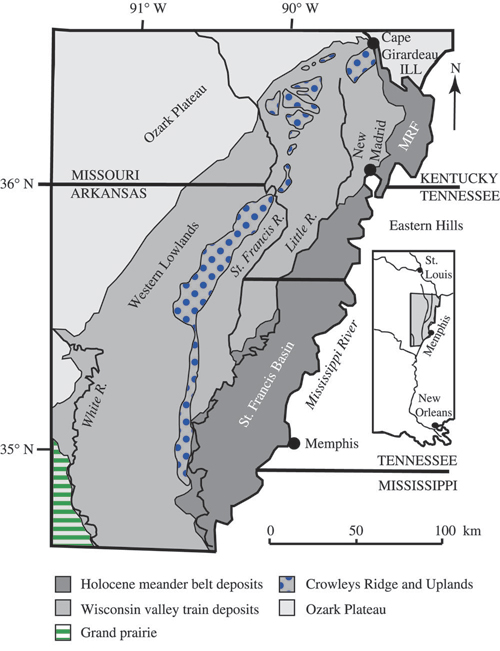 |
|
The New Madrid seismic zone is located in the northern part of what has been called the Mississippi embayment. The Mississippi embayment is a broad trough filled with marine sedimentary rocks about 50-100 millions years old and river sediments less than 5 millions years old. The upper 30 meters of sediment within the embayment includes sand, silt, and clay deposited by the Mississippi, Ohio, St. Francis, and White Rivers and their tributaries over the past 60,000 years. Wisconsin valley train deposits formed during the glacial period from 10,000-60,000 years ago, and the Holocene meander belt deposits were laid down during the past 10,000 years.
Geologic and seismotectonic model of the New Madrid region (modified from Braile et. al., 1984). The Mississippi embayment is underlain by Paleozoic sedimentary rocks up to 570 millions years old. The Paleozoic rocks are underlain by even older rocks that appear to have been deformed about 600 million years ago when the North American continent almost broke apart. During the process of continental rifting, a deep valley formed that is bounded by faults and known as the Reelfoot rift. The Reelfoot rift is identified today as a subsurface system of fractures and faults in the earth's crust. New Madrid seismicity is spatially associated with the Reelfoot rift and may be produced by movement on old faults in response to compressive stress related to plate motions.
Map of Mississippi River valley showing surficial geology (modified fom Saucier, 1994). MRF Mississippi River floodway. |
| M. Tuttle & Associates: P.O. Box 345, Georgetown ME 04548 • mptuttle@earthlink.net |

